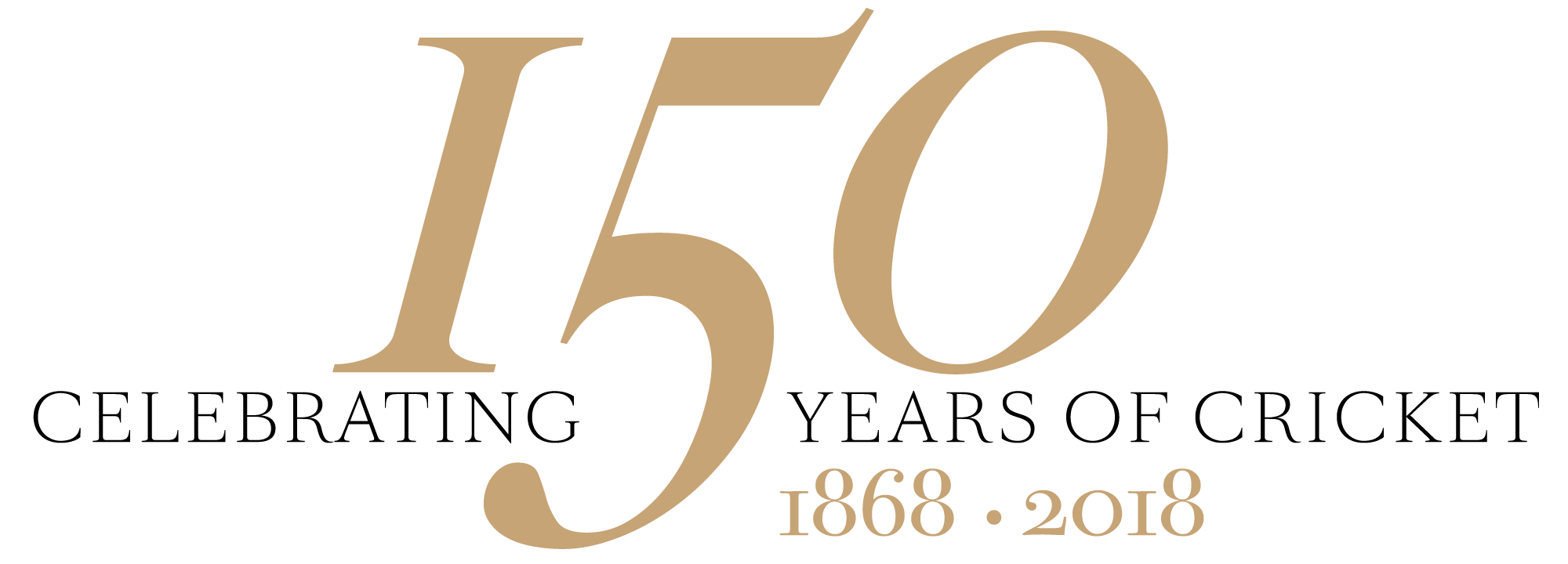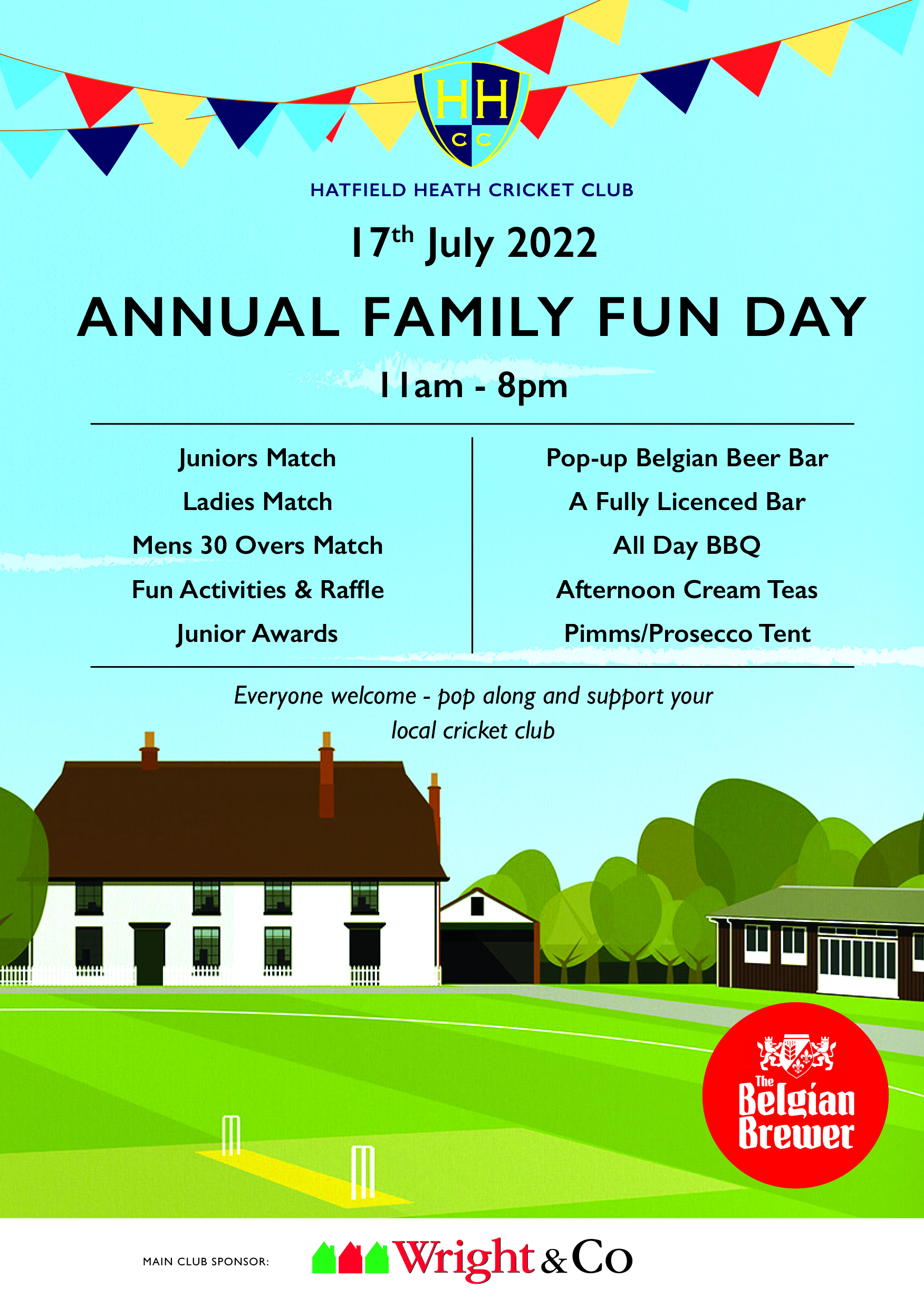Our History
Cricket has been played on our unique, ancient heath for over a century and a half.
Where it all started
The local village derby between Hatfield Heath and Hallingbury on 22nd September 1868 marks the first recorded match.
In 1880, 1881 and 1885 matches were played on the backfields in Hatfield Heath by kind permission of Stephen A.Pamphilon, the family lived at Lea Hall and Ongars. In 1882 a match was played in a meadow lent by Noah Griggs. In 1892 a hearty vote of thanks was given to Mr Cooper for the use of the ground for so many years. The backfields were probably in the area behind The Stag and TheWhite Horse. In the 20th century football was played on land at the rear of The Stag, so no doubt this area was the village “sports field.
On January 27th 1894 the following announcement appeared in the Herts & Essex Observer – Lady Rookwood has kindly started a subscription with ten guineas for the draining and levelling of the Heath, that the lads may have somewhere to play cricket, etc’. Mr H. Broke has also given five guineas and the work in now in progress”. Work may not have been in progress for on November 3rd 1894, the following announcement was made “The Cricket Club have decided to level part of the Heath so as to make the ground available for next summer’s cricket”. The earliest reference to cricket actually being played on the Heath was in June 1897.
In early 1945 a 1000lb bomb dropped onto the cricket square, completely devastating it. The square was reinstated by Ernest Does, who maintained it for three years until the cost became prohibitive. Then a set of gang mowers was purchased, along with the first tractor to cut the playing area and the outfield.
Early Matches
The start of the season in the 19th century was not until about mid-May and matches were often played during the week, though Saturday was the most popular day. No trace has been found of Hatfield Heath playing games in the village on a Sunday in those early days. It was not until 1949
when the Club requested permission from the Parish Council to play on a Sunday.
This was granted so long as matches ended before evening service, no doubt when the church bells rang. The number of matches played in a season in the 19th century was low, though a result was normally obtained. Both teams usually batted twice and if the second innings was not finished then the result was decided on the first innings total. In 1892 the Club played 5 matches, winning 3 and losing 2, and in 1897, they played 9 matches, won 4 and lost 5. Before the age of the internal combustion engine, opponents were local village or town teams, though in 1893 they played Fyfield no doubt travelling by horse and trap, or perhaps bicycle. Matches between Marrieds and Singles seemed to be a popular fixture for Clubs, in 1870 such a match in the village attracted 17 players on each side, so there was no shortage of potential players. Later, players were taken by Halls coaches to away games, the last time being in 1973.
Low Scores
The scores were invariably low, rarely exceeding 50. It was possibly in the game played against Hallingbury in 1868 that H.H. scored more than 100 for the first time, though in 1887 a team from Gladwyns scored 229 against a H.H. team. Probably the first century scored against the Heath was made by a C.Skeet who scored 122 playing for Great Hallingbury in a match on June 30th 1900, and the first century on the Heath by a player from Woodcutters C.C. The lowest score was possibly made by Matching Green on 7th August 1871 when they only scored 6 runs, nine of the players getting ducks.
First Club Officers
The earliest known officers of the Club were in 1890 when Edwin A.Cates, a master at the National School, was the secretary and the vicar, Rev.J.L Green being the treasurer. He still held the post in 1892, with Cornelius Nash being captain and J.Button the secretary. Mr Nash played cricket for many years and was captain in 1896 followed by Edward Harris in 1897. The vicars all seem to have been prominent in village cricket since at least 1871, they all played for the Club. The Rev.T.W Reynolds was Chairman in 1897. The longest-serving officer has been Mr Howard Pyle who has been associated with the Club for most of his life, he became President in 1953 to the present day.
Facilities
The changing facilities were rather primitive. A tree adjacent to Mill House had nails in it for the hanging up of coats, no hut or pavilion for changing. A garage at the front of Mill Cottage owned by Mr Ted Hockley was eventually used until a hut was erected on his land. The hut is still in use
in the village as a garden shed in the garden at Bentleys. The Institute had acted as the headquarters of the Club, meetings being held there. In the early 1960’s the Club decided that a proper pavilion was needed and regular whist drives held in the Institute, organised by Herbert Maskell and Stan Turner, helped to raise £800/900. With this amount to hand, the decision was made to start the process of obtaining permission for a building, the proposed cost was £888 6s Od. The total cost was met by the Club with a core of Members erecting it and even making many of the internal fittings.
The pavilion was officially opened on Sunday, 1st May 1966 by the Club President, Mr H. Pyle, over 100 people attended. The toilet facilities were added in 1968. Herbert and Stan still continued to raise money by now running bingo sessions every Saturday evening in the new pavilion.
The Englishman’s sport : Cricket at Hatfield Heath. An entry from Mr. Peter J. Elgar, of Brentwood
Teas
Refreshments were taken in a number of locations in the village, on July 5th 1880, teas were taken in a booth provided by Mr H. Sulins, a local brewer and farmer. On July 18th 1881 tea was taken after the game under an oak near the vicarage and in 1882 refreshments after some games were
taken in the vicarage. In 1886 lunch was taken at The White Horse. The Club wound up the season in 1890 with a game on a Monday, 13th October between Club members followed by a capital supper served in the schoolroom.
In 1892 the season was wound up with an afternoon match on Wednesday, 28th August followed by supper in The Stag. Again in 1897 the season was brought to a close with tea in Trinity Hall. Later teas had been taken in The Fox, then run by Mr and Mrs Bonsey, before transferring to The Institute, provided there for many years by Miss Dorothy Search and a team of lady helpers.
Fundraising
How fundraising was done in early days is almost unknown, though in January 1895 the Hatfield Broad Oak Blackamoors gave an entertainment in Trinity Hall from which £3 was made available to the Cricket Club. Until 1971 the Football and Cricket Clubs were run as a loosely joint organisation, raising money together and using common ground equipment. A regular annual fete was held in the field at the rear of Bentley’s.
In the 1990’s an annual quiz evening has been the main fundraising activity.
150th Celebration
On Sunday 8th July 2018, HHCC celebrated the past, present and future with a festival of cricket. To mark the occasion, our guests once again were Little Hallingbury. The day started with two junior matches, two age groups, which were fiercely contested right down to the final delivery. It was a credit to both cricket clubs the level of skill on display and the fine spirit in which both matches were played. A big thanks goes to Little Hallingbury CC for their help on the day. This was followed by the Chairman’s XI v Captain’s XI match which truly embodied the true spirit of our club. Up to three generations of families took to the field, with player both young and old enjoying a wonderful day in the sun, at the heart of our great village.


